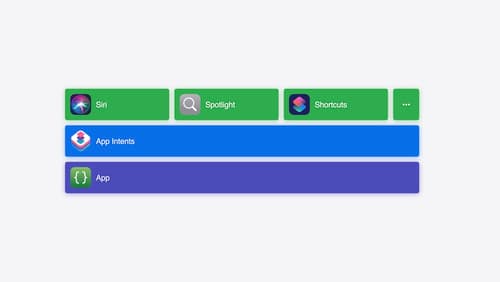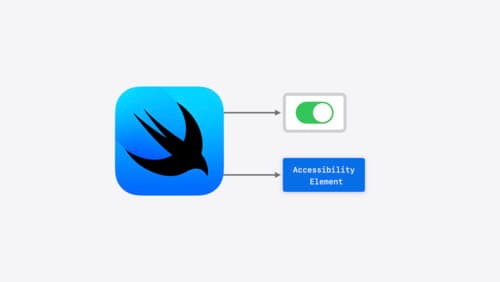What steps do I need to perform to create an App Clip that is launched when a web site is visited? I already have written the main app in SwiftUI.
Asked on 2024-08-18
1 search
To create an App Clip that is launched when a website is visited, you can follow these general steps:
-
Create an App Clip Target: In Xcode, add a new App Clip target to your existing app project. This will allow you to create a lightweight version of your app that can be launched quickly.
-
Configure the App Clip: Set up the App Clip's Info.plist file with the necessary configurations, such as the URL patterns that will trigger the App Clip. This involves specifying the
NSUserActivityTypesandNSUserActivityfor the URL handling. -
Design the App Clip Experience: Use SwiftUI to design the user interface for your App Clip. SwiftUI is a great choice for building the UI because it allows for a declarative and compositional approach, which is efficient for creating engaging user experiences.
-
Implement App Clip Code: Write the code necessary for the App Clip to perform its intended function. This might involve using the App Intents framework to define specific actions or shortcuts that the App Clip can perform.
-
Test the App Clip: Use Xcode's testing tools to ensure that the App Clip launches correctly when the specified URL is visited and that it performs its functions as expected.
-
Deploy and Monitor: Once your App Clip is ready, deploy it alongside your main app. Monitor its usage and performance to ensure it meets user needs.
For more detailed guidance, you might want to refer to the session Bring your app’s core features to users with App Intents (08:06) which covers building code with the App Intents framework, which can be useful for creating app shortcuts and actions that might be relevant for your App Clip.

SwiftUI essentials
Join us on a tour of SwiftUI, Apple’s declarative user interface framework. Learn essential concepts for building apps in SwiftUI, like views, state variables, and layout. Discover the breadth of APIs for building fully featured experiences and crafting unique custom components. Whether you’re brand new to SwiftUI or an experienced developer, you’ll learn how to take advantage of what SwiftUI has to offer when building great apps.

Bring your app’s core features to users with App Intents
Learn the principles of the App Intents framework, like intents, entities, and queries, and how you can harness them to expose your app’s most important functionality right where people need it most. Find out how to build deep integration between your app and the many system features built on top of App Intents, including Siri, controls and widgets, Apple Pencil, Shortcuts, the Action button, and more. Get tips on how to build your App Intents integrations efficiently to create the best experiences in every surface while still sharing code and core functionality.

Catch up on accessibility in SwiftUI
SwiftUI makes it easy to build amazing experiences that are accessible to everyone. We’ll discover how assistive technologies understand and navigate your app through the rich accessibility elements provided by SwiftUI. We’ll also discuss how you can further customize these experiences by providing more information about your app’s content and interactions by using accessibility modifiers.
